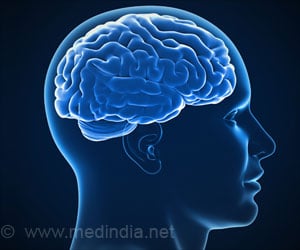- Sensory Processing Disorder (SPD)
- Understanding Sensory Processing Disorder
- About SPD - (https://sensoryhealth.org/basic/about-spd)
- Sensory Processing Disorder - Review - (https://www.uofmhealth.org/health-library/te7831)
- What Causes Sensory Processing Disorder? Can DIR help treat children with SPD? - (https://profectum.org/causes-sensory-processing-disorder-can-dir-help-treat-children-spd/)
- Understanding sensory processing issues - (https://www.understood.org/articles/en/understanding-sensory-processing-issues)
- Subtypes of SPD - (https://sensoryhealth.org/basic/subtypes-of-spd)
- How is Sensory Processing Disorder Diagnosed? - (https://www.asdclinic.co.uk/conditions/sensory-processing-disorder/how-is-sensory-processing-disorder-diagnosed.php)
- Treating Sensory Processing Issues - (https://childmind.org/article/treating-sensory-processing-issues/)
- Are There Therapies or Treatments for Sensory Processing Issues? - (https://www.understood.org/articles/en/sensory-processing-disorder-therapies-and-treatments)
- Preventing Sensory Processing Disorder in High-Risk Infants - (https://epidemicanswers.org/preventing-sensory-processing-disorder-high-risk-infants/)
- Asperger's Syndrome - (https://www.nationwidechildrens.org/conditions/aspergers-syndrome)
What is Sensory Processing Disorder?
Sensory processing refers to the neurological basis of how one feels. We are dependent on our sensory system to understand and respond to the world. Sensory processing issues in children can therefore be challenging to handle.
Sensory Processing Disorder (SPD) is a complex disorder of the brain in which an individual’s processing of sensory stimuli is affected. Sensory stimuli or information includes input from all the senses i.e., smell, touch, taste, sight, auditory input, body awareness, interoception, and movement. This disorder can lead to over or under-sensitivity to stimuli.
Oversensitivity or hypersensitivity leads to sensory avoiding where a child avoids certain stimuli and under sensitivity or hyposensitivity leads to sensory seeking behaviors. Sensory craving is also seen in some children.
There are three subtypes of Sensory Processing Disorder.

- Sensory Modulation Disorder is a type in which the individual is under or over-responsive to sensory information.
- In Sensory-Based Motor Disorder, coordination and balance are affected.
- Sensory Discrimination Disorder involves difficulty in understanding the subtle characteristics of environments, objects, or people.
Generally, SPD is seen among children, and adults with this condition are likely to have experienced it from a young age. It is a disorder that affects the brain and is seen among one in 20 individuals. 5 to 16% of children have been found to have SPD.
What are the Causes of Sensory Processing Disorder?
The causes of SPD are still being researched. Existing knowledge about the causes includes the possibility of SPD being inherited. Environmental factors that can contribute to the disorder include brain or spinal cord injury. Birth complications such as premature birth or low birth weight and problems in the prenatal stage can cause the condition.
SPD is seen commonly among children with developmental disorders such as Asperger’s syndrome and autism. The brain function and structure in these children are affected. Simultaneous exposure to sound and light seems to be problematic for those with SPD. Some children get used to the sensations with time.
What are the Symptoms & Signs of Sensory Processing Disorder?
The symptoms of SPD in which a child is overly sensitive include:

- Finding light too bright
- Feeling that clothes are scratchy
- Sounds feel very loud
- Touching soft things feel hard
- Certain food textures lead to gagging
- Poor sense of coordination and balance
- Impaired reaction to sudden sensory stimuli
- Fear of playing on swings
- Impaired motor skills
- Behavioral issues
- Fear of crowds
- Fear of cuddling
- Anxiety-related to falling
The signs of SPD in a sensory seeking child include:
- Inability to sit still
- High tolerance of pain and high temperatures
- Lack of awareness of own strength
- Thrill-seeking activities like spinning, jumping, and heights
- Lack of dizziness when spinning
- Impaired concept of personal space
- Impaired understanding of social cues
- Tendency to chew on things
- Need for visual stimulation
- Trouble sleeping
- Lack of recognition of dirt on the face
Sensory processing disorder symptoms in adults include discomfort with physical contact, sensitivity to taste or smell, and being selective about textures.
How do you Diagnose Sensory Processing Disorder?
SPD can be diagnosed by occupational therapists, physiotherapists, pediatricians, and psychologists. A thorough observation is conducted of the child’s behavior including response to sensory stimuli, balance and coordination, eye movements and posture. The Sensory Integration and Praxis Tests (SIPT) and the Sensory Processing Measure (SPM) checklist are used to assess the child’s processing capabilities.
Initial signs that help diagnose the condition include tantrums and mood swings. Children may lack control over their behavior and become violent towards themselves, objects, or others. These are telltale signs to seek professional help.

Parents will notice that their child’s behavior is unusual but may not know what the issue is. Consulting a healthcare professional is advisable. The developmental history is taken into consideration. A CT or an MRI scan can be helpful to investigate possible brain damage that may have contributed to SPD. Early treatment is more likely to be effective due to the neuroplasticity of the developing brain. Later treatment is likely to focus on coping methods.
How can you Treat Sensory Processing Disorder?
The treatment options for SPD involve:

- Sensory Integration Therapyinvolves a controlled environment called a sensory gym, in which the child is exposed to engaging and fun tasks with the therapist, and coping skills are developed to deal with such stimuli in daily life. Specialized equipment is available to engage the child.
- Occupational therapyhelps develop required everyday skills, fine motor skills such as brushing teeth or tying shoelaces, and gross motor skills such as jumping and running. In addition to this, a technique called brushing is used where the child is exposed to a soft brush to adapt to the sensations.
- A sensory diet that involves specific activities that contribute to helping the child manage the day, such as a foot massage, a break for the child to go on a walk, or allowing the child to listen to music while working, is helpful.
- Listening programsexercise ear muscles that help strengthen spatial awareness.
- Cognitive Behavioral Therapy can help manage the accompanying negative feelings and thoughts which occur with SPD. The therapy aims to provide optimal arousal and enable the child to regulate it. The process can help change neural circuits.
How to Prevent Sensory Processing Disorder?
SPD can be prevented by providing infants with a rich sensory diet with stimulation. For premature babies, finding ways for the parents to act as the incubator is found to be helpful. In addition, breast milk is recommended. Cod liver oil, which is free of mercury, aids the brain development of the infant and can be consumed by nursing mothers. Omega-3 fats and DHA supplements are also recommended.
Probiotics in premature babies can help improve digestive and immune functioning and aid brain development. Finally, early intervention is most effective and therefore any presence of symptoms should be checked as soon as possible.









